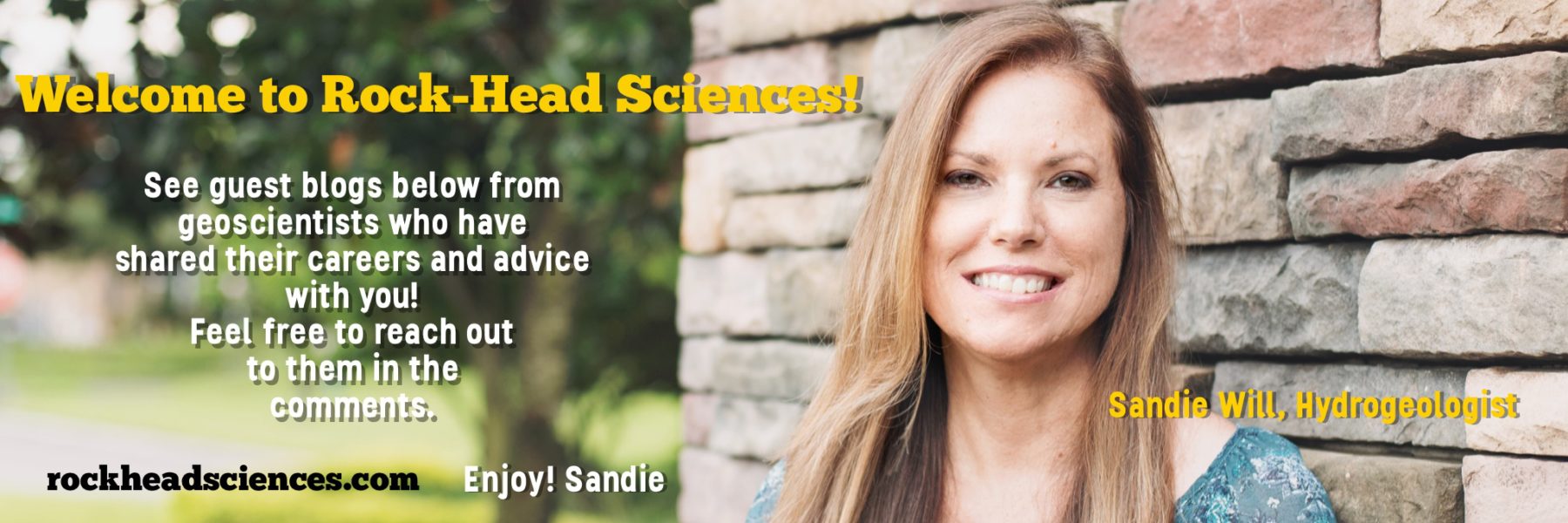NAME: Kelly Blake
CURRENT TITLE: Geologist
AREA OF EXPERTISE: Geothermal exploration
YEARS OF EXPERIENCE: 4.5
EDUCATION: Undergraduate degree in Environmental Geoscience from Slippery Rock University of Pennsylvania;
Master’s degree in Geology from Temple University in Philadelphia. I also spent two years working as a Geotechnical Engineer in New York between my undergraduate and graduate degree.
WEBSITE: WING (Women in Geothermal) http://wing.geothermal-energy.org
What’s your job like?
My job is a great combination of a lot of different aspects of geology. Our office, the Navy Geothermal Program Office, was created because there is a geothermal field called the Coso Geothermal Field (Coso) within the fence line of a weapons testing station in the Mojave Desert. Coso has an installed capacity of 250 megawatts (MW), which distributes its power to southern California. Our office was created to explore for other geothermal resources on Department of Defense lands to try to replicate the success of Coso. We do so through geologic mapping, geochemistry analysis, shallow temperature drilling, geophysics (.e. gravity, magnetics, magnetotellurics (MT), reflection seismic), and drilling immediate and deep wells and testing them to determine their potential to produce geothermal power. Our main exploration sites are in California and Nevada, but our office has done work in Utah, Idaho, Hawaii and Guam.
What’s a typical day like?
The typical day can change very much. I can go from writing papers for submissions to conferences and preparing proposals to be submitted to the United States Department of Energy (DOE) for additional funding, to being out in the field collecting geophysics. This job splits the desk time and field time to about 60/40% respectively, depending upon how busy we are in the field. A great example would be the past year of work. There were days when I was driving around checking seismometer equipment to make sure it was running correctly, to spending the day looking at core from Coso wells, to looking at image logs from wells, to being in the field collecting gravity measurements, to finally spending a week compiling a report.
What’s fun?
The fun portion of the job is mainly field work. Getting out in the field, hiking around, and collecting data is really the best part of the job. Spending time compiling and analyzing that data is always really interesting, but the time outdoors is the fun part.
What’s challenging?
There are many aspects that are challenging. When I first took the job, I had little experience within the geothermal industry, so getting up to speed and learning a lot in such a short period of time was challenging. Continuing to learn aspects of the science and industry that are not my strong points is also very challenging. The work itself, though, is very rewarding.
What’s your advice to students?
Mainly, be very persistent. I kept a journal of the jobs I applied to before I got this job. I have never counted how many jobs I applied to, but trust me that it was a lot! The squeaky wheel gets the oil, so never feel bad for bugging people consistently, especially when it comes to following up with an interview or the submission of a resume. Lastly, some advice I received from a childhood friend: “Go in with everything you have; you may as well be good at whatever it is you are trying to do right now.”


I spent a lot of my career relating studies of volcanoes to evaluation of associated geothermal energy resources. It was a gratifying practical application of a rather academic field.
If you don’t mind asking, was the exploration in the United States? And if so, where at? Just curious!